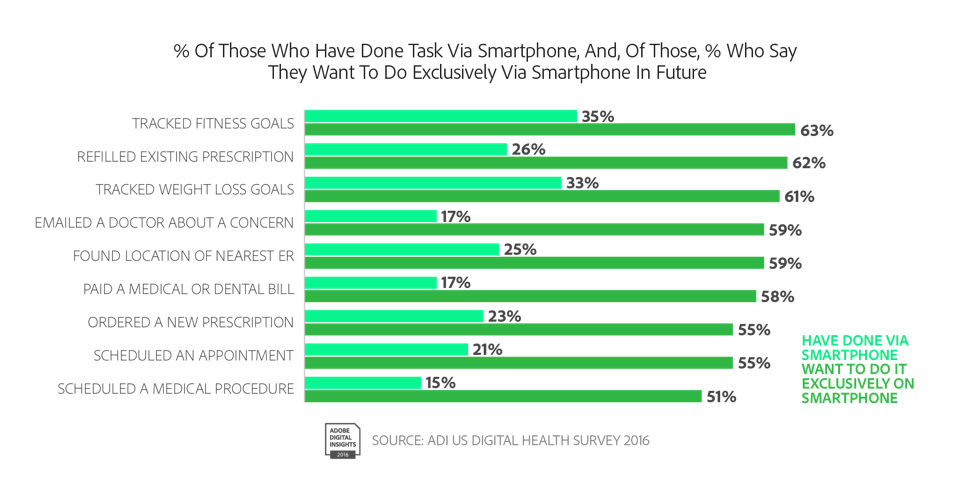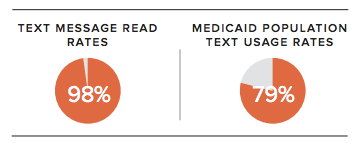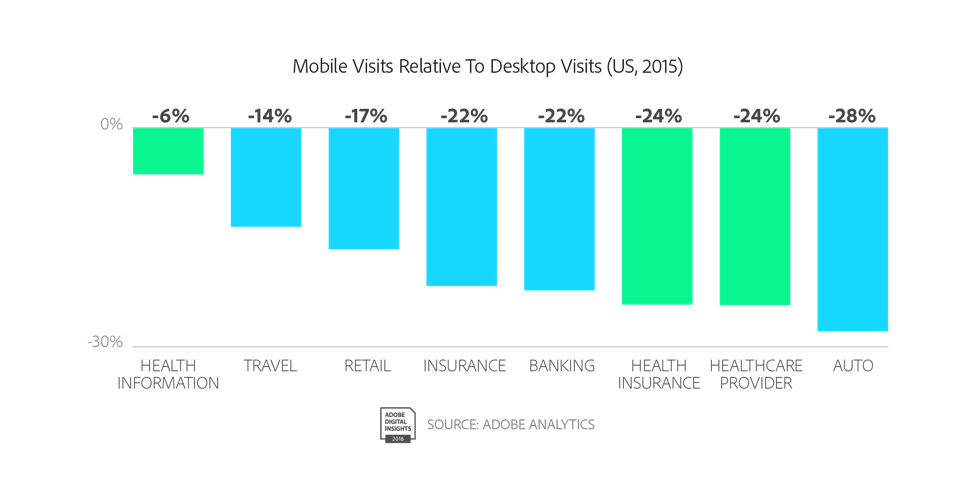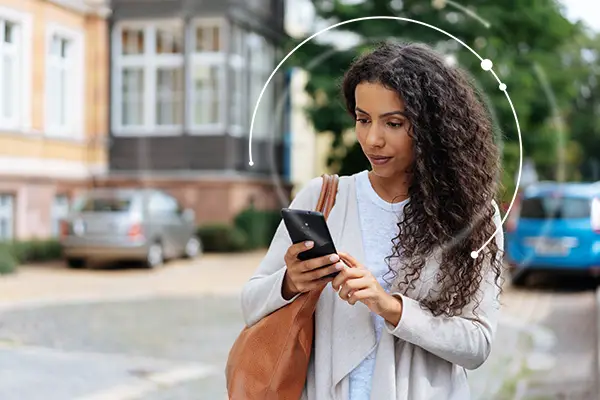As if by design, Adobe Digital Insights (ADI) released their findings from a survey of 1,000 U.S. healthcare consumers just a day after mPulse shared the results of a study of our own during The 6th Annual World Congress Medicaid Summit. ADI’s study focused on people that use mobile apps for health-related tasks, ranging from fitness to prescription refills and paying medical bills, and our study focused on the rates of mobile engagement in a Medicaid population. The results tell a similar story: people see high value in using their mobile devices to engage more with healthcare.
The results of ADI’s study are pretty interesting. This first chart shows that the majority of people that have used smartphones for health-related tasks would like to exclusively use smartphones for these tasks. That’s pretty compelling data. It indicates that once people make the leap into using mobile devices to manage their healthcare, they are likely to have a positive experience and want more. This implies that more effort should be made to engage people with mobile healthcare solutions.
 Our study used interactive text messaging over the course of 3 months with 17,000 newly enrolled Medicaid plan members. Of this population, 91% found text messages improved their overall knowledge of the plan’s services. More specifically, we saw a 48%-point improvement in new member knowledge of how to get care with the plan. By delivering a mobile healthcare experience via text message, a way almost everyone understands, people do not need to be digitally savvy to engage. They simply need to understand text messaging.
Our study used interactive text messaging over the course of 3 months with 17,000 newly enrolled Medicaid plan members. Of this population, 91% found text messages improved their overall knowledge of the plan’s services. More specifically, we saw a 48%-point improvement in new member knowledge of how to get care with the plan. By delivering a mobile healthcare experience via text message, a way almost everyone understands, people do not need to be digitally savvy to engage. They simply need to understand text messaging.

The power of leveraging mobile devices to improve healthcare is clear. Unfortunately, healthcare plans and providers are way behind on mobile engagement according to ADI. When comparing the amount of mobile website visits to desktop website visits, ADI found the categories Health Insurance and Health Provider near the back of the pack.

Why does this matter? Let’s look back at the mPulse Medicaid study. We found that 75% of Medicaid plan members in our study use a smart phone as their primary source of internet access. If the vast majority of health insurance and health provider website visits are conducted via desktop and the vast majority of Medicaid plan members are accessing the internet from a mobile device, it is pretty clear that Medicaid populations are not easily accessing the information they need, or are at least unlikely to have a positive experience doing so.
‘“The problem is that the health-care industry, in general, hasn’t yet caught up to be able to deliver on people’s digital demands and expectations,” said Matthew Roberts, an analyst at ADI. “Furthermore, we’re seeing that the companies that are delivering smartphone experiences, such as apps, are not doing enough in driving awareness and adoption.”’ from ADI’s post on the survey results.
See ADI’s survey results on slideshare
It is time for health insurance companies and healthcare providers to focus on mobile, and for those focused on mobile to double-down on strategies to increase adoption. The technology exists for healthcare organizations to make big improvements in how they interact with people, and both the demand and benefits are clearly present.
Further Reading: Healthcare Apps: The Good, The Bad, The Ugly




